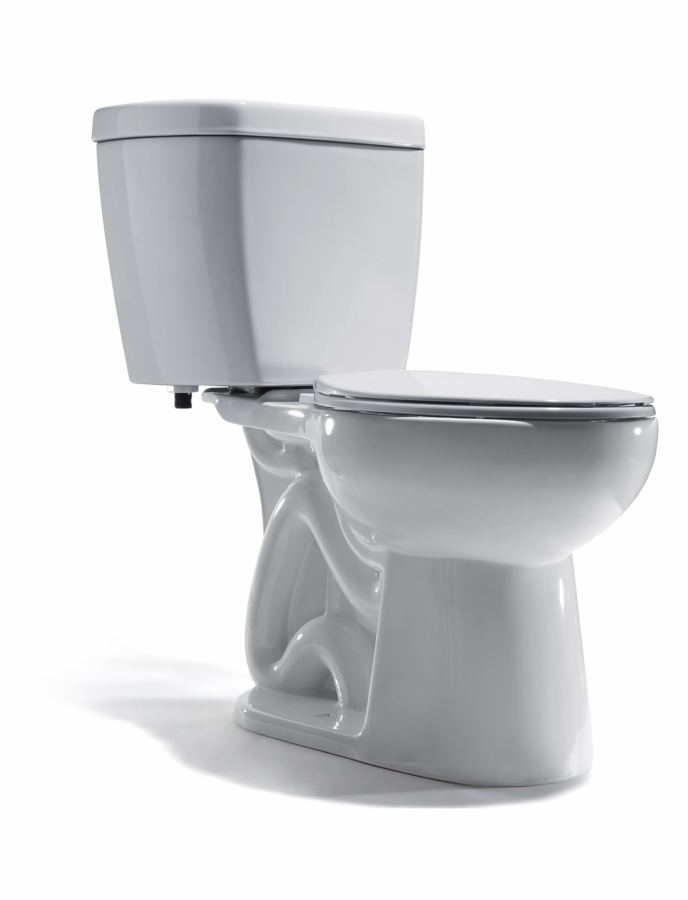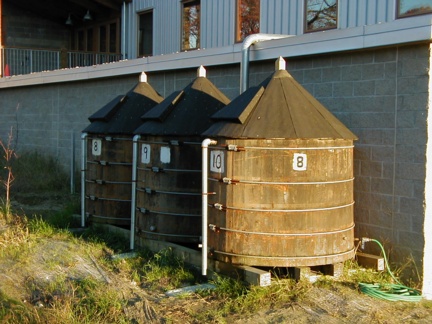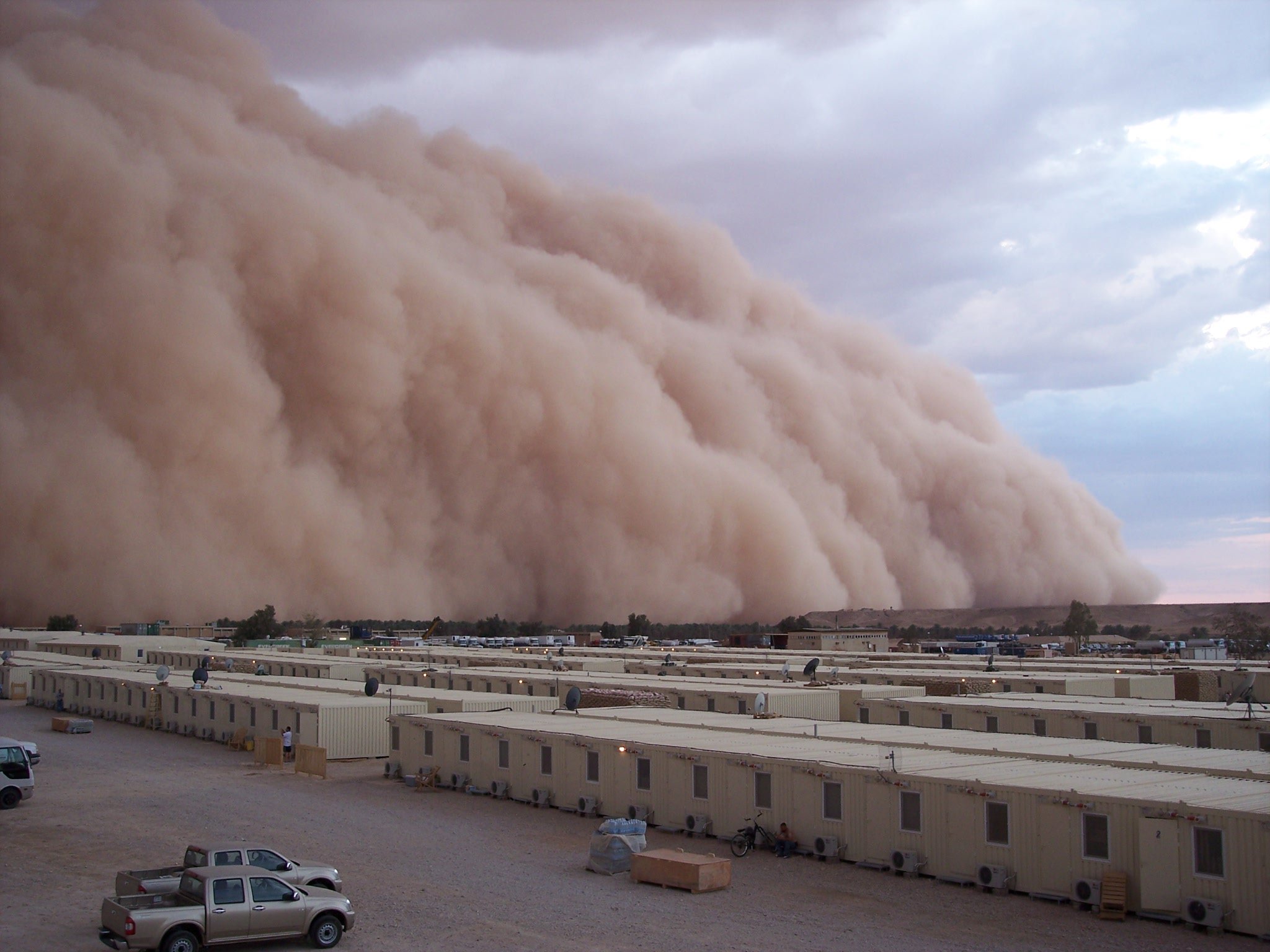I doubt private residential swimming pools will be outlawed any time soon (especially as an outside pool IS a rainwater collection system!), though that certainly is a fertile place for water and energy efficiency regulation. Mandatory solar thermal anyone? Now golf courses should be mandated for native drought-resistant plants. You shouldn't expect to play in the same flora in California as in frickin' Scotland! :P
Blog Post
Resilient Design: Water in a Drought-Prone Era
Periodic drought is something that a significant portion of the U.S. will have to get used to in the coming decades. Climate scientists tell us that while precipitation will increase overall with climate change, certain regions, including the American West, will see increased frequency of drought.
I certainly saw that last year, when I spent six weeks bicycling through the Southwest, from San Diego to Houston. Most of the 1,900 miles I covered had seen barely a drop of rain since the previous fall. Statewide, Texas had an average of just 15 inches of rain in 2011--barely half of the typical rainfall.
Ironically, drought sometimes exacerbates water shortages in other ways. Wildfires in Lubbock, Texas last June knocked out 20% of the city's crucial water wells, reducing the city's water supply by nine million gallons per day for two weeks. Then in July, shrinking clay soils in Fort Worth, Texas resulted in more than 200 breaks in water mains, spilling precious water into the ground. Austin suffered similar problems as did other communities throughout the state that was suffering from the worst drought on record. As we think of adaptation to climate change and resilience, dealing with water has to be a part of our focus. In this blog I'll cover how to improve the efficiency with which we use water and measures to ensuring access to water during shortages.

Use water efficiently
When water becomes scarce, it is all the more important to use that water efficiently. During drought emergencies, restrictions in certain water uses (such as outdoor irrigation) are commonly instituted. By planning ahead and replacing water-intensive lawns with low-water-use native landscaping (often called "xeriscaping"), your grounds will likely do just fine without water.
If you want to be able to get by with stored water during interruptions in water supply (see below), you need to make that stored water go as far as possible. This means ultra-low-flush toilets, such as the new generation of high-efficiency toilets (HETs) that use no more than 1.28 gallons per flush or that offer two flush volumes, showerheads using as little as 1.5 gallons per minute, bathroom faucets with flow rates as low as 0.5 gallons per minute, water-conserving horizontal-axis (front-loading) clothes washers, and top-efficiency dishwashers.
SUPPORT INDEPENDENT SUSTAINABILITY REPORTING
BuildingGreen relies on our premium members, not on advertisers. Help make our work possible.
See membership options »One can go even further with water-efficiency using composting toilets that don't use any water, waterless urinals, and graywater systems that capture water from a lavatory sink to re-fill the toilet.
Relying on a spring on a hill
Rural homeowners with springs that gravity-feed water to the house are at a distinct advantage when it comes to resilience. Our home in Dummerston used to be served by a spring on the hill above our house that relied on gravity to deliver water to a cistern in our basement. The vertical drop from the spring wasn't enough to deliver a strong shower, so we had a shallow-well pump in the basement to charge a pressure tank, but during power outages I could turn a few valves and switch over to gravity-pressure for our home water system; the 20 psi of pressure provided a weak shower--but a lot better than none. Unfortunately, after several years of the spring running dry in August, we drilled a well and pretty-much abandoned the spring.
On-site water storage
If your water supply is interrupted for whatever reason, the only real option is to have stored water on-site. Rural homeowners who face periodic power interruptions are familiar with this issue. Unless we have back-up generators, when we lose power we lose our water, because our deep-well pumps don't work. This is my situation. We have a pressure tank in the basement, so we may still have a few gallons of available water after a power outage, but not much. It's always a good idea to have stored water on hand for emergency use.
Those five-gallon carboys used with drinking-water dispensers work well for storing potable water. Fill them, seal them to keep insects and dust out, and keep them in a dark location to prevent algae growth. Open containers may be fine for storing non-potable water that can be used to flush toilets. When we lose power, we shut off the fill-valve to one of our toilets, and fill it manually after flushing. You can carry water from a stream, collect water from your roof in buckets positioned under the eaves, or rely on a full-blown rainwater harvesting system (see below).

Rainwater harvesting
A greater level of resilience can be achieved with a rainwater harvesting system. The simplest of these systems is a rain barrel positioned under a downspout at the corner of your house. With larger systems, multiple downspouts feed rainwater into a large tank, or cistern, that stores the water. Many types of cisterns are available, made from plastic, fiberglass, galvanized steel, wood, or cement.
I've seen rainwater systems with buried cisterns that hold tens of thousands of gallons, but more common are tanks holding a few thousand gallons in an outdoor shed or basement. Being able to gravity-feed water from a cistern is an advantage, but that's often hard to do in cold climates, since the tank has to be kept from freezing.
Simple rainwater harvesting systems are typically used (during non-emergency times) for outdoor irrigation. More sophisticated systems are designed to provide potable water and include first-flush systems (to discard the first water that comes off a room during a rainstorm), filtration, and purification systems to ensure safe water. When used for potable water, a metal roof is usually the best surface, since less detritus is held in the roof surface.
About this series
Throughout this resilient design series, I'm covering how our homes and communities can continue to function in the event of extended power outages, interruptions in heating fuel, or shortages of water. Resilient design is a life-safety issue that is critical for the security and wellbeing of families in a future of climate uncertainty.
Alex is founder of BuildingGreen, Inc. and executive editor of Environmental Building News. To keep up with his latest articles and musings, you can sign up for his Twitter feed.
Published January 31, 2012 Permalink Citation
(2012, January 31). Resilient Design: Water in a Drought-Prone Era. Retrieved from https://www.buildinggreen.com/blog/resilient-design-water-drought-prone-era
Comments
The fact is that most of us d
The fact is that most of us do and will live in larger metro areas. What we can do as individuals and as designers is the subject of my last book, Dry Run: Preventing the Next Urban Water Crisis (New Society, 2010). It's easy to cut water use in most new projects by 50% and with some effort by 80%. In new homes, just landscaping for the bioclimatic region will cut water use 40%, fixtures will add another 30% savings, then it's up to individual choices. (I harvest rainwater and reuse graywater at my home in Tucson.)
If we would outlaw flush toil
If we would outlaw flush toilets, golf-course lawns, and private residential swimming pools we would go a long way to mitigating water shortages. If we would then mandate composting toilets, rain-water collection systems, and grey-water systems we would not only dramatically reduce wasteful potable water consumption but also drastically reduce ground-water pollution. The number one source of ground-water pollution today in the US is private septic systems. Out of sight, out of mind was never a good rule to live by.
As one who has to pump water up from a stream to fill a 50 gallon barrel, collects rainwater or snow melted on my woodstove for washing dishes, and uses a composting outhouse, my daily water consumption is about half a gallon. Once learns to be truly conservative only when one has a direct, muscular connection to the gathering of precious resources.




Add new comment
To post a comment, you need to register for a BuildingGreen Basic membership (free) or login to your existing profile.